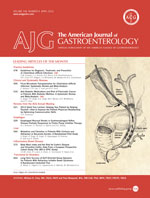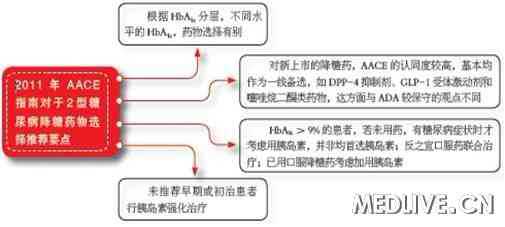Am J Gastroenterol:血脂与结直肠腺瘤的相关性
2013-06-19 王姗 编译 医学论坛网
目前有证据提示血脂异常与结直肠肿瘤相关,但此类证据较少。近日,来自韩国的研究者Moon Hee Yang发表论文,旨在研究血脂和载脂蛋白浓度与结直肠腺瘤发生率的相关性。研究指出,在这项大型横断面研究中,较高的血甘油三酯水平与非高级别腺瘤与高级别腺瘤日趋增长的发病率明显相关,同时较高水平的ApoA-1和HDL与非高级别腺瘤增长的发病率明显相关。该文发表在《美国胃肠病学杂志(A
目前有证据提示血脂异常与结直肠肿瘤相关,但此类证据较少。近日,来自韩国的研究者Moon Hee Yang发表论文,旨在研究血脂和载脂蛋白浓度与结直肠腺瘤发生率的相关性。研究指出,在这项大型横断面研究中,较高的血甘油三酯水平与非高级别腺瘤与高级别腺瘤日趋增长的发病率明显相关,同时较高水平的ApoA-1和HDL与非高级别腺瘤增长的发病率明显相关。该文发表在《美国胃肠病学杂志(American Journal of Gastroenterology,AJG)》上。
研究者对在2006年1月-2009年6月间,连续在韩国Samsung医疗中心的健康促进中心进行结肠镜筛查的19281名年龄在40~79岁之间的参与者进行横断面研究。
结果5958名参与者确诊为结直肠腺瘤(30.9%),其中5504名(28.5%)为非高级别腺瘤,454名(2.4%)为高级别腺瘤。比较第四四分位数(Q4)与第一四分位数(Q1)患者的血浆甘油三酯,得出的校正后相对发病率(adjusted relative prevalence ratios , aRPRs)为非高级别腺瘤1.35[95%可信区间(CI)1.20-1.52; P<0.001],高级别腺瘤1.45(95% CI 1.02-2.06; p=0.005)。高水平的高密度脂蛋白(HDL)和载脂蛋白A-1(ApoA-1)与较高的非高级别腺瘤发病率明显相关,分别为12%(Q4 vs. Q1 aRPR 1.12; 95% CI 1.00–1.26; P=0.049)和17%(Q4 vs. Q1 aRPR 1.17; 95% CI 1.04–1.31; P=0.004)。而较高水平的低密度脂蛋白(LDL)(Q4 vs. Q1 aRPR 1.22; 95% CI 0.91–1.66; P=0.12)和载脂蛋白B(ApoB)(Q4 vs. Q1 aRPR 1.32; 95% CI 0.94–1.83; P=0.07)与较高的高级别腺瘤发病率相关性不明显。血总胆固醇水平与结直肠腺瘤发生则无相关性。

The Association of Serum Lipids With Colorectal Adenomas
OBJECTIVES
There is suggestive but sparse evidence that dyslipidemia is associated with colorectal neoplasms. We investigated the association of serum lipid and apolipoprotein concentrations with the prevalence of colorectal adenomas.
METHODS
Cross-sectional study of 19,281 consecutive participants aged 40–79 years undergoing screening colonoscopy at the Center for Health Promotion of the Samsung Medical Center in Korea from January 2006 to June 2009.
RESULTS
We identified 5,958 participants with colorectal adenomas (30.9%), including 5,504 (28.5%) with non-advanced adenomas and 454 (2.4%) with advanced adenomas. The adjusted relative prevalence ratios (aRPRs) comparing the fourth with the first quartiles of serum triglycerides were 1.35 (95% confidence interval (CI) 1.20–1.52; P trend<0.001) for non-advanced adenomas and 1.45 (95% CI 1.02–2.06; P trend=0.005) for advanced adenomas. Higher levels of high-density lipoprotein (HDL) cholesterol and apolipoprotein A-1 (ApoA-1) were significantly associated with 12% (Q4 vs. Q1 aRPR 1.12; 95% CI 1.00–1.26; P trend=0.049) and 17% (Q4 vs. Q1 aRPR 1.17; 95% CI 1.04–1.31; P trend=0.004) higher prevalence of non-advanced adenoma. There was also a non-significant association between higher levels of low-density lipoprotein (LDL) cholesterol (Q4 vs. Q1 aRPR 1.22; 95% CI 0.91–1.66; P trend= 0.12) and apolipoprotein B (ApoB) (Q4 vs. Q1 aRPR 1.32; 95% CI 0.94–1.83; P trend=0.07) with higher prevalence of advanced adenoma. There was no association between total cholesterol levels with colorectal adenoma.
CONCLUSIONS
In this large cross-sectional study, higher levels of serum triglycerides were significantly associated with an increasing prevalence of both non-advanced and advanced colorectal adenomas, while higher levels of ApoA-1 and HDL cholesterol were significantly associated with an increasing prevalence of non-advanced adenomas.
本网站所有内容来源注明为“梅斯医学”或“MedSci原创”的文字、图片和音视频资料,版权均属于梅斯医学所有。非经授权,任何媒体、网站或个人不得转载,授权转载时须注明来源为“梅斯医学”。其它来源的文章系转载文章,或“梅斯号”自媒体发布的文章,仅系出于传递更多信息之目的,本站仅负责审核内容合规,其内容不代表本站立场,本站不负责内容的准确性和版权。如果存在侵权、或不希望被转载的媒体或个人可与我们联系,我们将立即进行删除处理。
在此留言









#相关性#
70
#Gastroenterol#
63
#GAS#
59
#AST#
46
#结直肠#
51